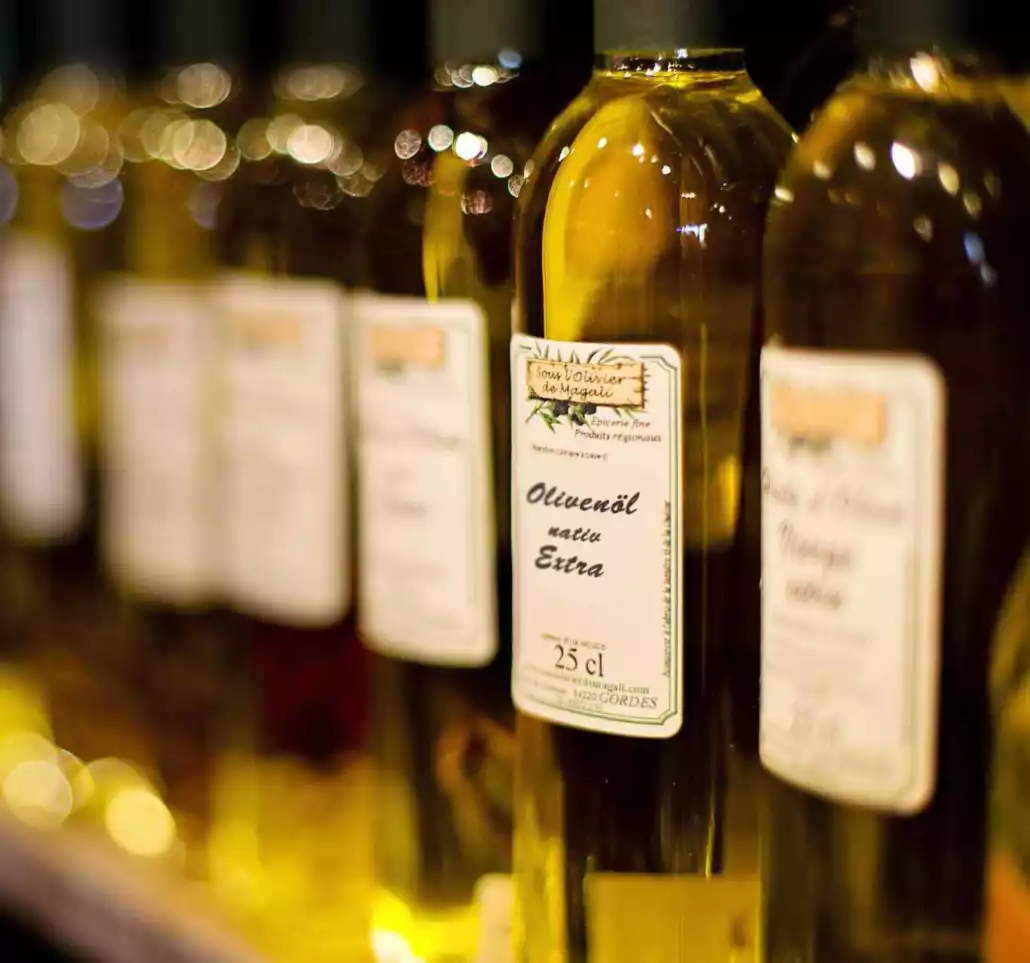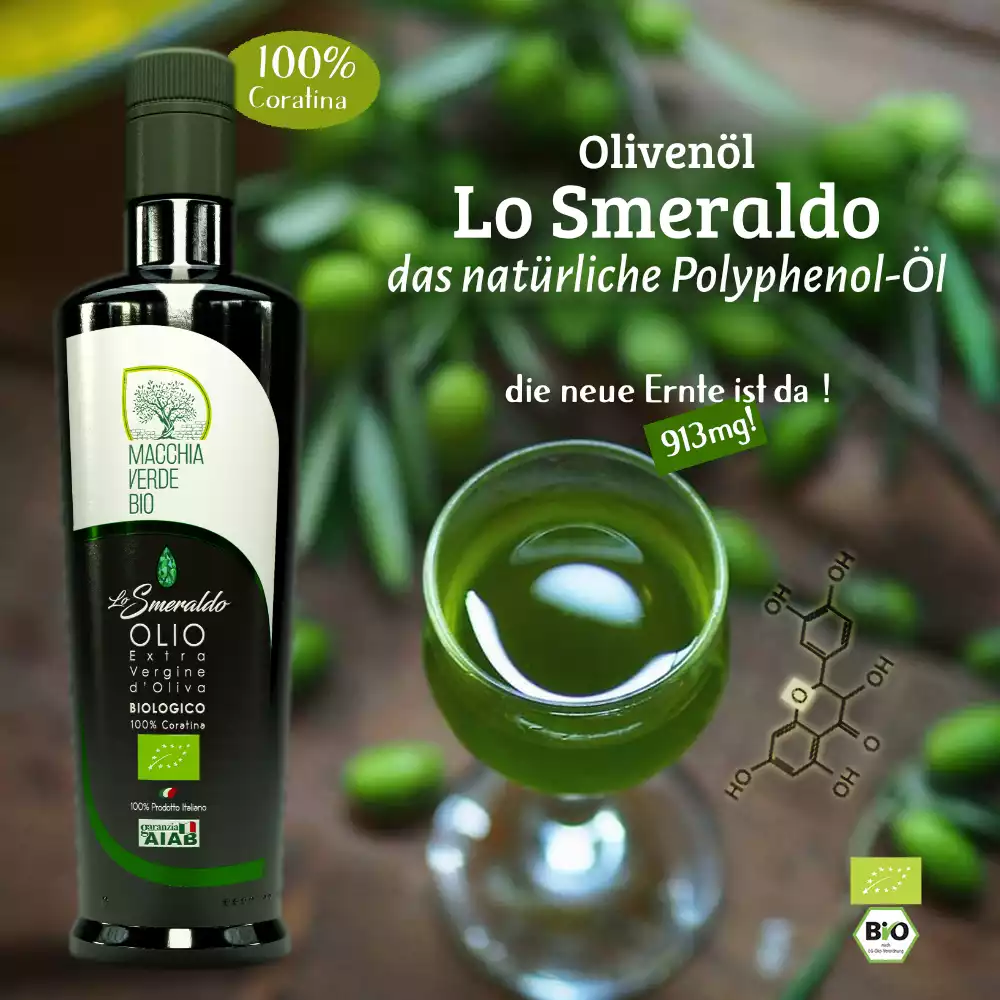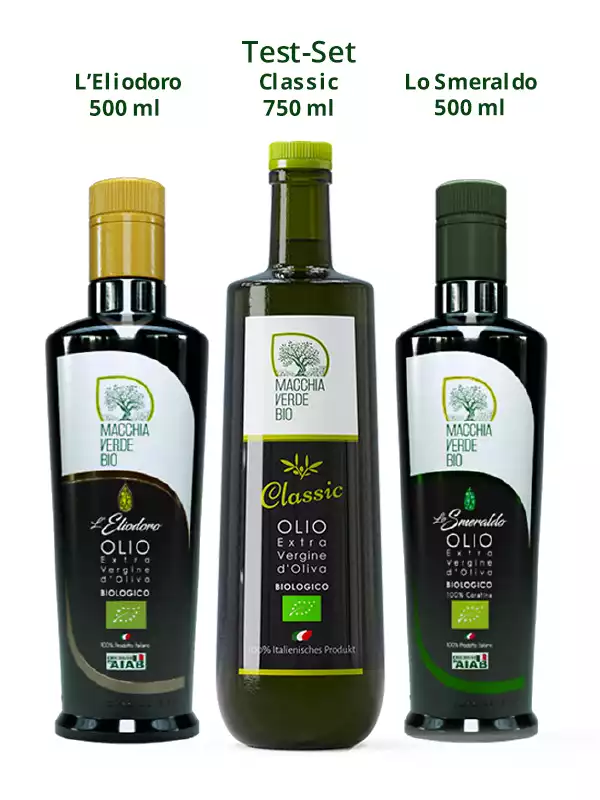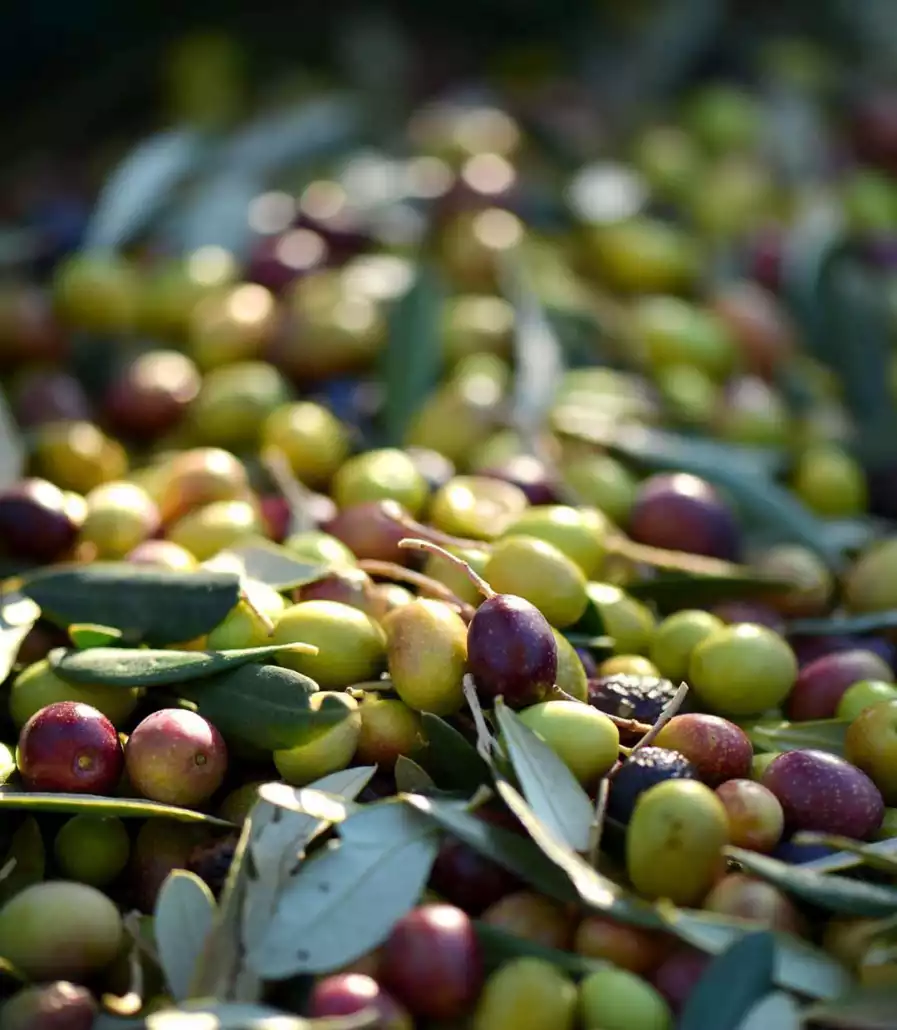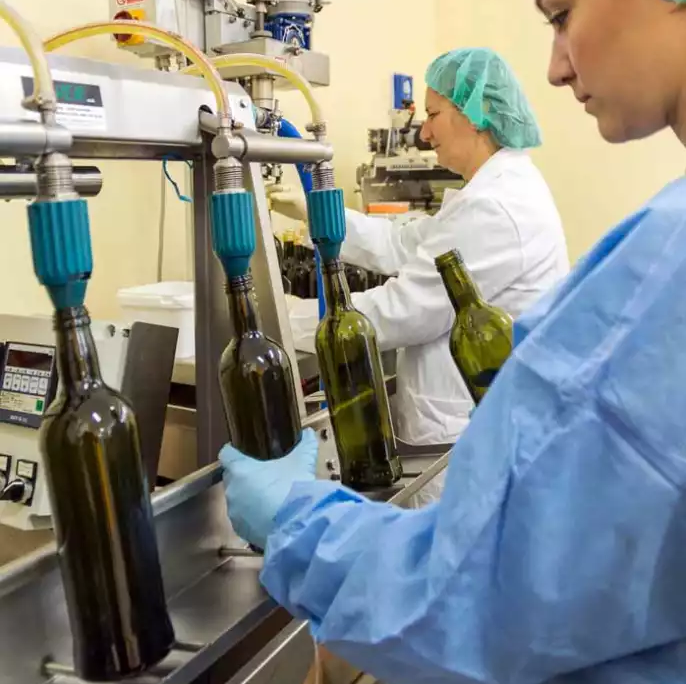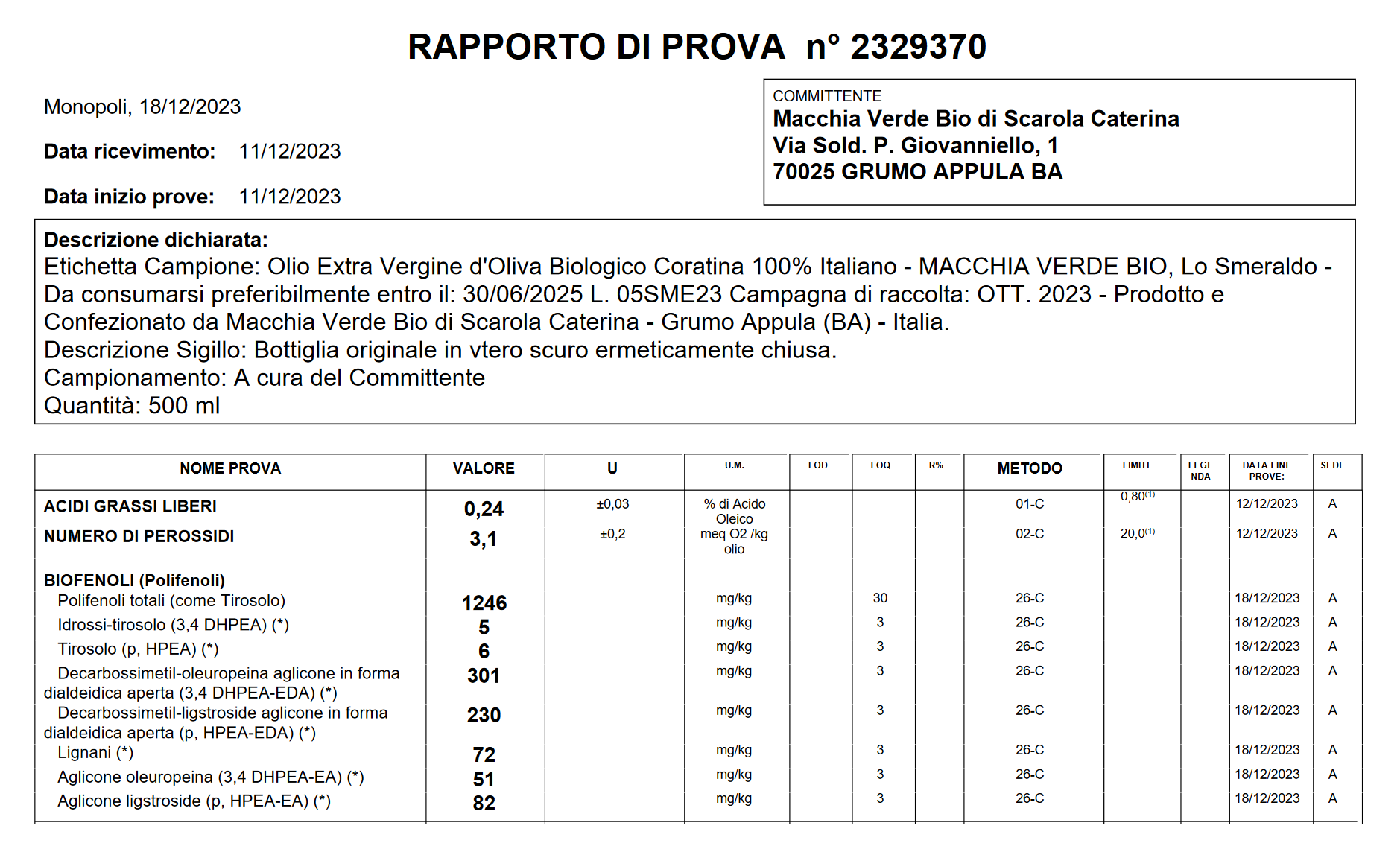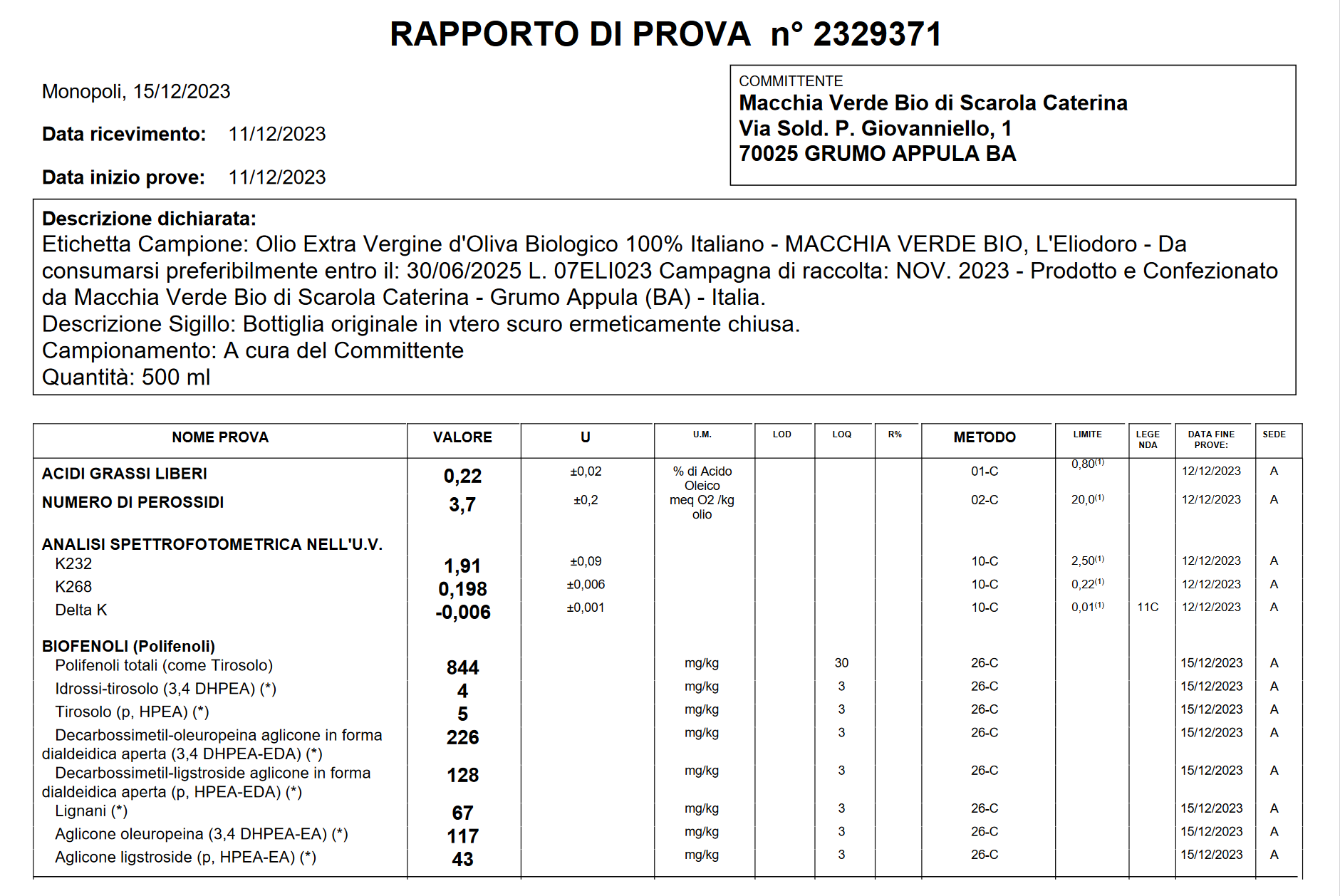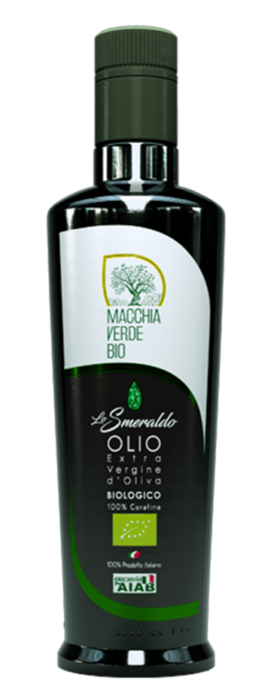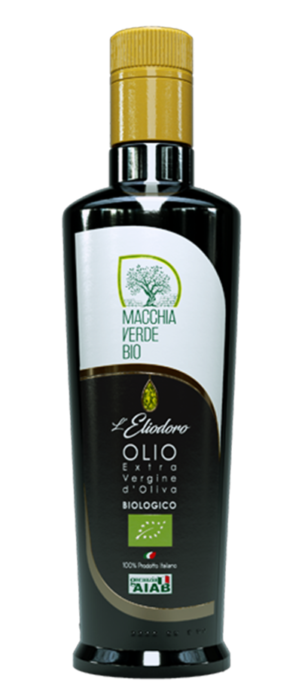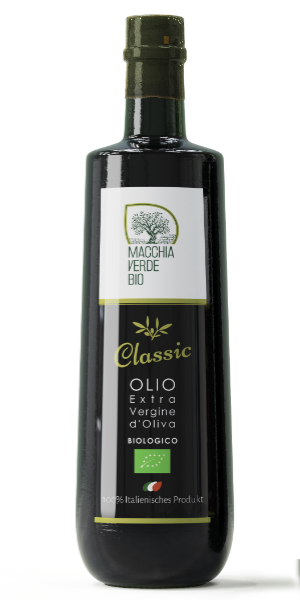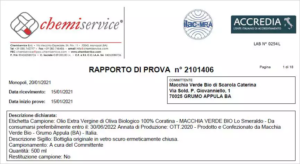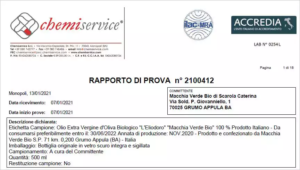IS THE POLYPHENOL CONTENT THE ONLY ASSESSMENT CRITERION FOR OLIVE OIL?
The polyphenol content is certainly one of the most important criteria for evaluating an olive oil, if health effects are taken as the basic parameter. But there are a few other parameters to take into account.
Olive oil (extra virgin) is a natural product, or at least it should be, as such it is the fruit of processes that humans cannot influence. These processes take place as chemical reactions in the tree and also in the fruit. In the past, it was thought with regard to phytopharmaceuticals (herbal medicines) that the efficacy of a medicinally used plant could only be found in a single active ingredient, which had to be isolated, copied and reproduced. Except for aspirin (acetylsalicylic acid), which could be isolated from the willow bark, it failed miserably. It has been clear for some time that the interaction of active ingredients, excipients, secondary and carrier substances is important for achieving health effects with plant substances. S.o With olive oil, even if you want to take only the health aspect as a parameter, make sure that the oleic acids have developed a stable molecular structure, that the vitamins (e.g. E and K) have developed … etc.
All this can only be found in perfection in a fruit that is in the early stages of ripening. The purely mechanically extracted oil from these fruits will contain all the substances necessary for the polyphenols to develop their full potential.
How is it that olive oil is variously rich in polyphenols?
There are many factors that influence the polyphenol content of an olive oil. But to answer this question clearly, we have to make an assumption:
We assume that all colleagues (olive growers) apply the same precautions and methodologies for cultivation, care, fertilisation, harvesting and pressing as we do.
Then the following factors remain:
| OLIVE ROSES |
| GROW |
| SOIL STRUCTURE |
| SUN |
| EYE TIME |
| WATER SUPPLY |
If the Coratina olive is the richest in polyphenols, why is there an olive oil with a higher polyphenol content than that of MACCHIA VERDE BIO?
As we explained in the first paragraph, olive oil is a natural product and is subject to fluctuations. So it can happen that we had a bad year, our trees got too much water and too little sun. Then the farmer who had a similarly strong olive variety (e.g. Cornicabra) but an optimal year will have the same values or even more than us. Apart from the factors described above, there are two exceptions:
1. The marketing statement
2. The forcing of the harvest time
With regard to 1., there are manufacturers who know how important polyphenol values are to a good olive oil and try to position their product with a “naming”. The name “thousand” for example. suggests that the oil might contain 1000 mg/kg polyphenols, but in the end, according to the analysis values, this is only 740 mg/kg, which is about the same as what we have in this harvest year.
With regard to 2., there are manufacturers who, in order to live up to the polyphenol hype and gain a market advantage, are pushing the harvest time extremely.
This process is called harvesting “in Ligno”, Latin for “in the wood”, because the olives are harvested while still in the wood-fruit phase. In this phase, the olives are extremely rich in polyphenols, while all other substances have not yet developed. These olive oils with extreme polyphenol values of 1200/1300 mg/kg are not pleasant and do not win any prizes, they are only extremely expensive due to the low oil yield, and it is questionable whether the polyphenols they contain can do without all the other accompanying substances.
Polluting olive oil is not a myth!
We are committed to organic farming and we are very proud of our olive groves. The children were introduced to the work from the beginning and are now a driving force in the business since the grandparents were absent due to age. As a family business, we can consistently implement the standards we have set for ourselves. We cannot make mistakes through negligence or ignorance, because we all know the consequences that can follow. We even go a step further, knowing the environmental toxins that can manifest themselves from the air and through precipitation, we subject the olives to an intensive wash with fresh water before processing.
All our olive oils have been laboratory tested for 1112 pesticides and toxins, not a single one has been found!
OLIVE OIL TEST 2021: OUR LABORATORY VALUES
Enclosed in the table all the most important values of our olive oils of the new harvest (campaign 2019/2020), the pollutants/toxins for which our oils were tested (1112 in number) will be summarised under a single value, as otherwise the table would be much too long.
OLIVE OIL TEST for “Lo Smeraldo” organic olive oil
Laboratory analysis n° 2329370 of 18/12/2023
OLIVE OIL TEST for “L’Eliodoro” organic olive oil
Laboratory analysis n° 2329371 of 15/12/2023
OLIVE OIL TEST for organic olive oil “Classic”
Laboratory analysis n° 2329373 of 15/12/2023
Our test laboratory Chemiservice S.r.l. is the most renowned laboratory in the field of olive oil analysis, in all important competitions such as Biol or Olio Award only analyses from this laboratory are accepted. Unfortunately, we are not allowed to publish the original, so you will find only a partial reproduction here, but you can request and check the full analysis using the number.
We will present all the important values in a table.
Note: In this test the compulsory (according to Italian law) values such as K232, K268, Delta-K (ΔΚ) are shown, which allow us to determine whether oxidation processes have taken place in the oil, how fresh the oil is and the ΔΚ value indicates whether the olive oil is a mixture of different oils. In this test, 70% of all olive oils on the UK-market would fail.

